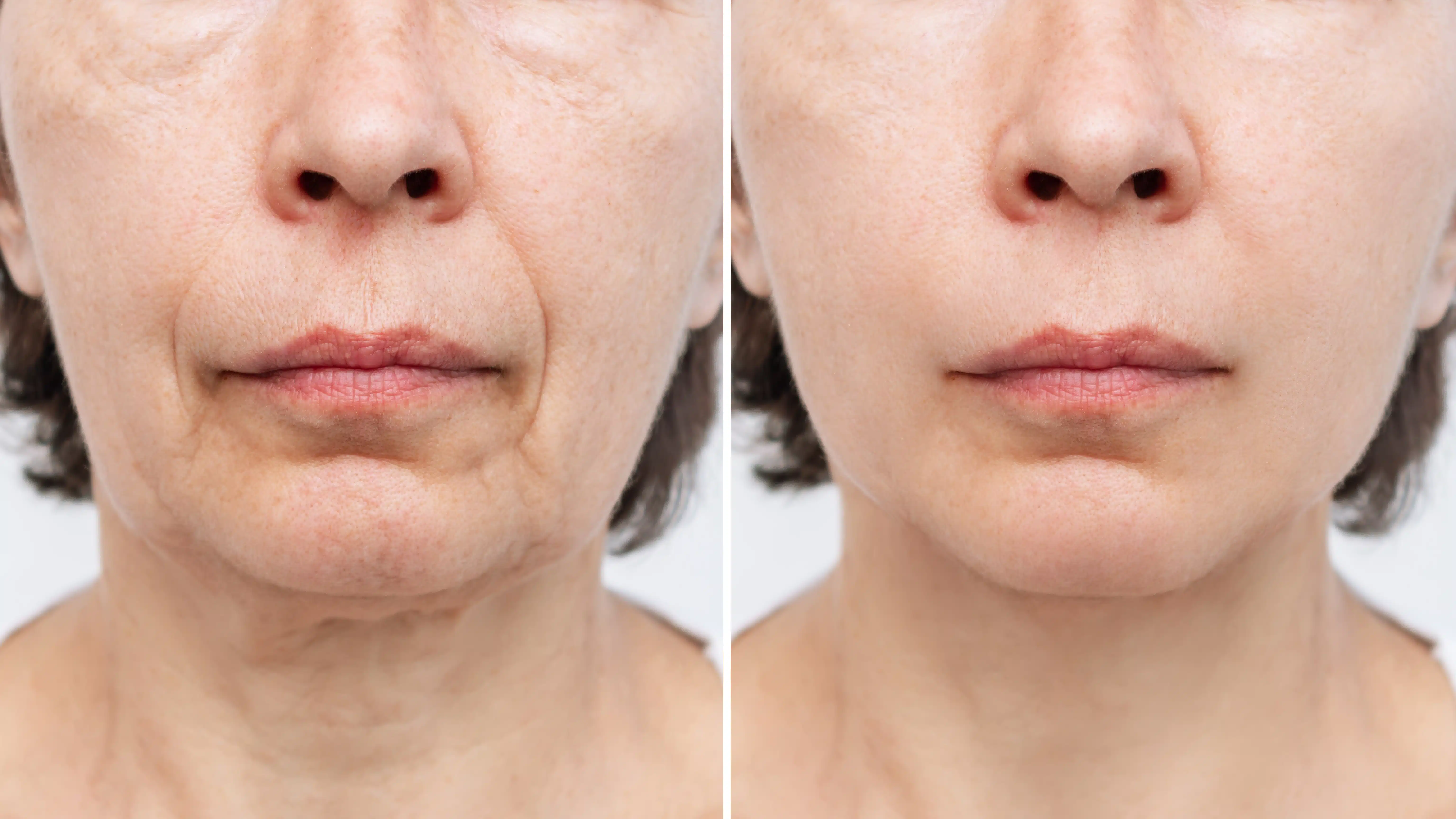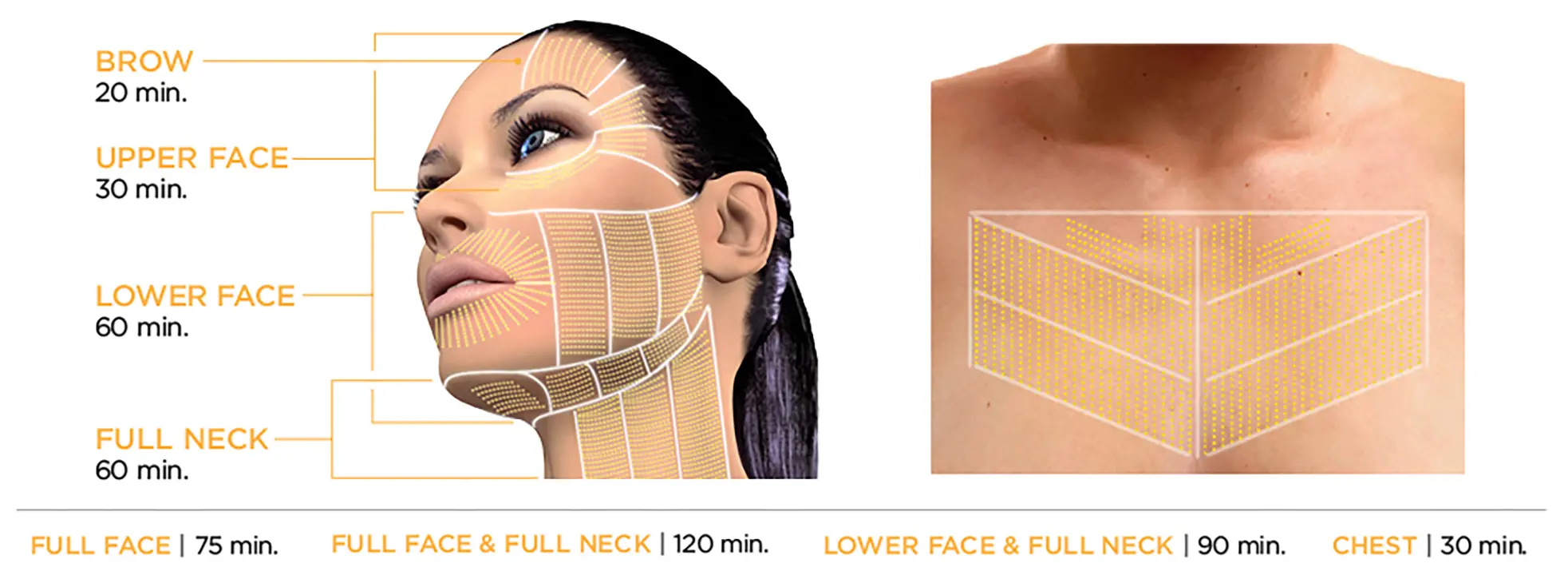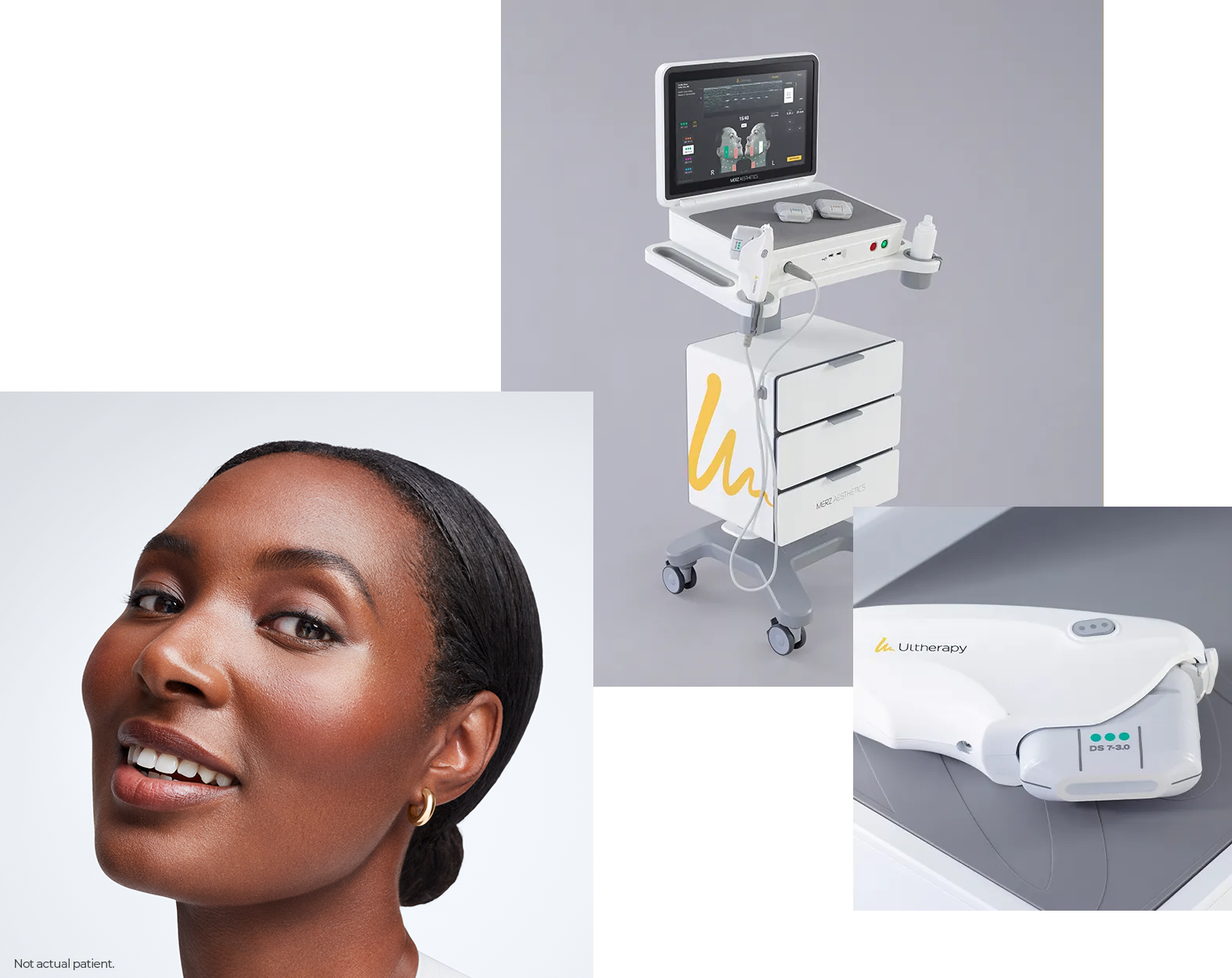Why Ultherapy May Be Clinically Required: Exploring the Factors for a Non Surgical Lift
Ultherapy is gaining focus as a feasible option for people dealing with skin laxity due to maturing or certain clinical problems. This non-surgical treatment boosts collagen production, supplying an option that avoids the recuperation time connected with intrusive procedures. As individuals seek to improve not just their look however additionally their general skin wellness, understanding the conditions that call for Ultherapy's usage ends up being essential. What aspects add to its medical need?
Understanding Ultherapy: What It Is and Just how It Functions
Ultherapy, a non-invasive cosmetic treatment, utilizes ultrasound modern technology to stimulate collagen manufacturing and promote skin tightening up. By supplying focused ultrasound energy deep right into the skin, it targets the foundational layers normally addressed in surgical renovations. This process motivates the body's all-natural recovery reaction, leading to steady lifting and tightening of the skin with time.

Therapy sessions typically last in between 30 to 90 mins, depending on the size of the area being dealt with. While outcomes may not be promptly noticeable, optimal results generally appear within 2 to 3 months as collagen continues to establish. Ultherapy deals an engaging non-surgical alternative for individuals seeking skin renewal without the requirement for intrusive procedures.
The Aging Refine: Results on Skin Elasticity and Collagen
Aging undoubtedly brings modifications that lessen skin flexibility and collagen manufacturing, causing noticeable indicators of drooping and wrinkles. As individuals age, the skin's capacity to keep dampness reductions, leading to a drier and much less durable surface area. Collagen, a crucial healthy protein in charge of skin framework, additionally diminishes, causing the skin to lose its firmness and youthful appearance. Factors such as sun exposure, ecological toxins, and way of living selections better increase this decrease in skin high quality.
This loss of flexibility and collagen produces a cascade of changes, consisting of the development of jowls, deepening nasolabial folds up, and a general sagging appearance. The skin's assistance system weakens, making it more susceptible to the impacts of gravity. As a result, lots of individuals look for interventions like Ultherapy to battle these aging impacts, aiming to bring back a more younger, tight look without the need for invasive operations.
Clinical Conditions That May Take Advantage Of Ultherapy
Ultherapy is progressively identified for its possible advantages in attending to different clinical problems. People experiencing skin laxity, those in post-surgical recuperation, and individuals with chronic skin conditions might discover this non-invasive therapy helpful. By promoting collagen production, Ultherapy can boost skin suppleness and boost total look for these groups.
Skin Laxity Problems
Skin laxity can be a significant problem for individuals experiencing various clinical problems that impact the stability and elasticity of their skin. Conditions such as Ehlers-Danlos disorder, which interrupts collagen production, can lead to early skin aging and sagging. In addition, people with autoimmune problems may experience skin modifications that contribute to laxity. Hormonal variations, particularly throughout menopause, additionally play a role in decreasing skin suppleness. Ultherapy, using ultrasound modern technology, targets the deeper layers of skin, stimulating collagen production and tightening up the impacted locations. This non-invasive treatment might offer a practical solution for those looking for to deal with skin laxity arising from these medical conditions, improving both appearance and self-esteem without the requirement for surgical intervention.
Post-Surgical Healing Help
Post-surgical recuperation can commonly existing obstacles, particularly for individuals experiencing skin laxity as a result of medical interventions. Ultherapy functions as a possible aid in this circumstance, using ultrasound modern technology to stimulate collagen manufacturing and enhance skin rigidity without invasive treatments. Clients that have actually undergone surgical procedures such as facelifts, liposuction, or various other body contouring procedures might locate that Ultherapy boosts their recovery by attending to unequal appearance and laxity that can take place post-operation. This non-surgical technique can cause boosted visual end results, possibly decreasing the need for added surgical interventions. In addition, it may help reduce discomfort connected with the recovery process, offering patients a much more comprehensive recovery experience. Ultherapy can be an important option in post-surgical treatment.
Persistent Skin Problem
For people experiencing from persistent skin conditions such as acne scars, rosacea, or laxity as a result of aging, non-invasive therapies may supply substantial relief and improvement. Ultherapy has emerged as a promising alternative, using ultrasound modern technology to stimulate collagen production deep within the skin. This procedure can improve skin appearance and elasticity, addressing issues like irregular complexion and sagging. Specifically, those with rosacea might experience decreased inflammation and inflammation, while individuals with acne scars can take advantage of improved skin level of smoothness and overall appearance. Importantly, Ultherapy gives a non-surgical option that decreases healing time and threats connected with intrusive treatments, making it an enticing selection for people looking for effective administration of persistent skin problem.
Mental Impact of Sagging Skin and Visual Issues
The psychological toll of aging commonly manifests in the type of sagging skin, which can substantially influence an individual's self-esteem and total psychological well-being. Lots of people connect youthful appearances with energy and good looks, bring about feelings of insufficiency when confronted with noticeable indications of aging. This regarded decrease in elegance can cause social anxiety, withdrawal from social interactions, and an increased obsession with one's look.
Individuals might feel compelled to look for aesthetic treatments to deal with these problems, as the need to preserve a youthful appearance can end up being linked with individuality. The mental impacts of drooping skin might also cause depression or a decreased top quality of life. Non-surgical choices like Ultherapy arise as prospective remedies, aiming not just to revitalize the skin yet also to restore confidence and a positive self-image, ultimately dealing with the much deeper emotional ramifications of aging.
Contrasting Ultherapy to Traditional Surgical Options
When comparing Ultherapy to typical surgical alternatives, significant distinctions emerge in both cost-effectiveness and recovery time. Ultherapy deals a non-invasive method that commonly leads to lower expenses and marginal downtime for patients. On the other hand, surgical lifts generally require even more economic investment and a prolonged recuperation period.
Cost-Effectiveness of Ultherapy

Conventional medical lifts typically come with substantial upfront costs and prolonged recuperation times, Ultherapy offers a compelling option that can supply equivalent results at a fraction of the cost. The average cost of a surgical renovation can range from $7,000 to $15,000, while Ultherapy treatments typically fall in between $2,000 and $4,500, depending on the location dealt with and service provider knowledge. Additionally, the Density RF Malaysia lack of considerable pre-operative evaluations and post-operative care related to Ultherapy better adds to its cost-effectiveness. This approach not just decreases monetary strain however also permits clients to purchase various other aspects of their health and wellness and wellness. By doing this, Ultherapy arises as a monetarily practical choice for those looking for facial renewal without the site worries of traditional surgical procedure.
Recuperation Time Comparison
Recuperation time is a significant element in the decision-making procedure for those considering cosmetic procedures. Ultherapy stands out as a non-surgical option that generally needs marginal downtime. A lot of individuals can return to their daily tasks practically immediately, experiencing only moderate redness or swelling that typically fixes within a couple of hours. In comparison, conventional surgical options, such as renovations, often require an extensive recovery period. Patients might encounter several weeks of swelling, wounding, and restricted activity, with some going back to typical routines using up to three months. This raw distinction in healing time makes Ultherapy an attractive choice for people looking for effective outcomes without the considerable aftercare related to surgical procedure, enabling for a smoother adjustment back to everyday life.
The Long-Term Benefits of Non-Invasive Treatments for Skin Health
As people progressively seek options to procedures, the long-term advantages of non-invasive therapies for skin health come to be extra apparent. Treatments such as Ultherapy, chemical peels, and laser therapy deal significant advantages without the requirement for considerable recovery times connected with surgical treatment. Non surgical facelift Malaysia. With time, these non-invasive choices can advertise collagen production, causing stronger skin and a more vibrant appearance
Furthermore, normal non-invasive treatments can improve skin appearance, tone, and flexibility, improving general skin health and wellness. Individuals commonly experience less complications and negative effects, making these procedures a lot more enticing.
Moreover, the advancing effects of constant therapies can maintain and extend visual renovations, allowing people to keep their wanted appearance with marginal downtime. By focusing on non-invasive techniques, individuals can attain enduring outcomes while prioritizing their health and wellness and well-being. Eventually, the lasting benefits of such approaches emphasize their growing appeal in click over here contemporary skin care.
Often Asked Concerns

How Lengthy Does an Ultherapy Session Typically Take?
An Ultherapy session typically lasts between 30 to 90 mins, depending upon the therapy area. Variables such as the individual's specific demands and the extent of the procedure can influence the general duration.

Are There Any Kind Of Side Results Connected With Ultherapy?
Ultherapy can cause adverse effects such as short-lived soreness, swelling, or inflammation in the treated location - RJ Clinic Ultherapy. While a lot of people experience minimal discomfort, it is crucial to speak with a professional for customized suggestions and possible reactions
How Soon Can I See Results After Treatment?
Results from Ultherapy generally begin to appear within 2 to 3 months post-treatment. The full results might remain to establish over 6 months as collagen manufacturing increases, leading to recognizable lifting and tightening up of the skin.
Is Ultherapy Suitable for All Skin Types?
Ultherapy is normally suitable for different skin types, including lighter and darker tones. Nevertheless, specific skin problems and worries may impact its performance, making assessments with a qualified expert essential for customized referrals.
Exactly How Often Should Ultherapy Treatments Be Repeated?
Ultherapy therapies are usually suggested every 6 to twelve month, depending on specific skin problem and preferred outcomes. Regular assessments by a certified specialist can assist identify the most effective frequency for upkeep and performance.